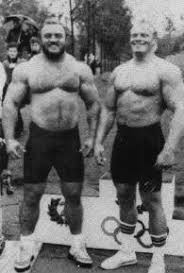(For those unaware, I only train my deadlifting touch and go. I picked up this style after a massive back injury prevented me from deadlifting for over 3 years, and this was the only painfree way I could return to training.)
All Deadlifts Should be Touch and Go

Hear me out first
“A deadlift starts from a dead stop on the floor. That’s why it’s called a deadlift. If you don’t pause on the floor, it’s not a deadlift.”Hear me out first
I will agree with that, purely because I am a semantic asshole. That said, it’s a terrible reason to choose how you do an exercise. Anyone who has done a deadlift knows that breaking off the floor tends to be more the most stressful portion of the lift, even if you are strong off the floor. Breaking a very heavy weight off the floor is taxing. Doing it multiple times in a workout is very taxing. Doing this multiple times a week/month in turn is incredibly taxing. In many cases, it makes recovery between workouts difficult without excessive eating/sleeping (which I am very much in favor of, but also realize that many have lifestyle that will not support this/don’t want to get excessively fat).
The touch and go style ensures that you break off the floor significantly less in a workout (I’ll still break off the floor at least twice, once for the initial, and one more time after the first put down to see how many more reps I can eek out), making the entire process less taxing. Additionally, many make the argument that dead stop deadlifts are more analogous to a competition deadlift, since you only do one rep in competition. I argue that with this logic, the touch and go is actually a better tool for training for a heavy single. Anyone that has ever seen or taken part in a grinder deadlift has see the common 7-8 second agonizing single. When you perform deadstop deadlifts with a weight you can do for 5 reps (for the sake of argument), none of these reps are going to last longer than 1-2 seconds, and thus your body learns how to strain for this long when it comes to deadlifting. When placed in a situation where it needs to take 7 seconds to get from floor to lockout, it is in foreign territory. When you perform a touch and go set for the same amount of reps, you in turn are maintaining tension for 5-10 seconds, meaning that your body is able to handle this sort of tension and knows how to remain tight. Though the weight you will be using during the deadlift will be heavier in competition compared to your touch and go training lifts (which can be remedied with ROM progression training, which I have addressed here http://mythicalstrength.blogspot.com/2012/12/range-of-motion-rom-progression.html), the time you are straining will be equal.
Though some may make the counter argument that dead stop deads get you stronger since you get better at breaking off the floor, and anything you can break off the floor for a working set you can definitely do in competition, I would argue that since touch and go deads are less taxing and make it easier to recover between training, your strength will increase at a faster rate (due to less needed deloads/resets/time off), and you will either at least meet or surpass the deadstop crowd, and be less burnt out/injury prone as you do. With breaking off the floor being the most stressful and taxing part of the lift, it is going to be the part most prone to causing injury as you fatigue toward the end of the set and experienced form deviation.
Additionally, use straps with touch and go. The bar is going to be off the floor for a LONG time, don’t let your grip ruin your workout.
Weak From The Floor
"Sort of an intro question here, but have you ever found that you're weak off the floor?"
A question that was asked of me about touch and gos, and my answer.
"Sort of an intro question here, but have you ever found that you're weak off the floor?"
So your question actually ties into a rant I've had before. I will attempt to be succinct but make no promises.

Did I mention my education is in politics?
Did I mention my education is in politics?
Short answer: No.
I don't believe there is such a thing as "weak off the floor" for a raw lifter. It logically makes no sense, as the floor by definition is the hardest part of the lift for a raw lifter, much like how off the chest is the hardest part of the lift for a raw bencher. In my deadlift training, anything I can get off the floor, I can lockout, because I have accomplished the hardest part of the lift at the beginning and now simply have to complete the lift. If I cannot break the weight off the floor, I am not "weak off the floor", I am simply weak. Once I get strong enough to be able to break a weight off of the floor, I will be strong enough to deadlift it.
Now at the same time, I do recognize the limitations of touch and go deads in that there is not as much practice in breaking weight off the floor compared to deadstop reps. This is why, in my training, I break the weight off the floor twice in a set. I do as many reps as I can in one go, set the bar down, rest, and then repeat for one more set. Not only is this more practice, but additionally it's practice in breaking weight off the floor in a fatigued state, which bears a similar benefit to breaking all of your reps off the floor, but at the same time allows for a significantly higher weight to be utilized compared to a pure dead stop set.
To put in perspective, I recently did a touch and go set of 5 reps of 590. I managed to do 4 reps before I had to put the bar down, rested for about 90 seconds, and then did one more rep. Realistically, if I were to do a deadstop set of 590, I most likely would've been able to manage 2 reps. Maybe a triple. I essentially broke the exact same amount of reps off the ground, but got WAY more time under tension with the former over the latter.
But lets be real and acknowledge that, even in the raw training world, there are guys who are very fast off the floor and struggle at lockout (I won't name names, as I don't want it to be construed that I am in any way "calling people out". I respect these guys, because that's pretty crazy). What ultimately is the benefit of being fast off the ground in a training perspective? Being "strong off the floor" by definition means you are also "weak at lockout", as you can't simply be "strong all over".

I suppose there are exceptions
The alternative is not the same. When you are strong off the floor, you can very much pull a weight off the floor that you are not capable of locking out, which you won't discover UNTIL it's time to lock it out. This is going to be far more energy and time invested in a failed lift, which will in turn impact your recovery as well. You will have to keep in mind that this is entirely theorycraft for me, as I have never had the issue of being strong off the floor, and it may perhaps be the case that someone who has this attribute can indicate from their warm ups what can be accomplished in that training session, but this is what I see as being a potential issue.
I suppose there are exceptions
With this acknowledgement, one also realizes that, in the realm of missed training lifts, the percentage increases significantly with one who is weak at lockout versus weak off the floor. When you are weak off the floor and go to pull a weight you cannot handle, the lift is missed before it starts. The weight is welded to the floor and not going anywhere. In terms of energy/time invested and impact to your recovery, it's going to be minimal. You also aren't going to be grooving much of anything into your motor pathway, as you simply aren't moving.
The alternative is not the same. When you are strong off the floor, you can very much pull a weight off the floor that you are not capable of locking out, which you won't discover UNTIL it's time to lock it out. This is going to be far more energy and time invested in a failed lift, which will in turn impact your recovery as well. You will have to keep in mind that this is entirely theorycraft for me, as I have never had the issue of being strong off the floor, and it may perhaps be the case that someone who has this attribute can indicate from their warm ups what can be accomplished in that training session, but this is what I see as being a potential issue.